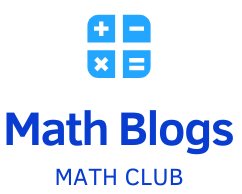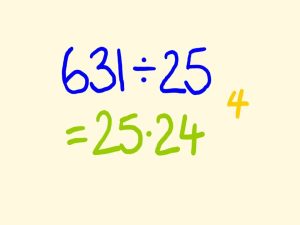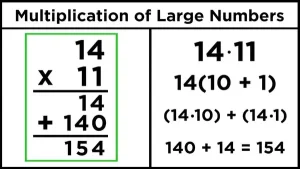Math Software & Tools
General software provides an ideal laboratory-like environment for students to explore mathematical concepts by manipulating inputs and testing outputs, then compiling data that allows for analysis to search for patterns or generalizations.
Fluidmath is a free interactive math and physics tool designed specifically for Pen-Centric platforms like tablets. Easily used by educators for dynamic educational materials creation for their students.
GeoGebra
GeoGebra is an engaging mathematics software solution designed to engage both students and teachers with mathematical concepts in an enjoyable and accessible manner. Available in multiple languages with extensive tutorials and classroom resources, its user-friendly interface combines geometry, algebra, spreadsheets, graphing statistics and calculus in an engaging learning experience that supports EOL (English as a Second Language) students while remaining compatible with most platforms.
GeoGebra as an instructional tool enhances learning and classroom performance, enabling students to engage with mathematical problem-solving by conducting experiments and making conjectures that would otherwise go undone in a lecture-based learning environment. GeoGebra promotes student-centric approaches to teaching while encouraging creativity, communication and collaboration within classroom settings.
GeoGebra’s ease-of-use combined with multiple representations of objects makes it easier for students to grasp abstract concepts. For instance, 3D shapes can be displayed on 2D planes while their algebraic functions appear simultaneously – helping students make connections between math topics that relate together as well as limits and continuity of functions (crucial prerequisites of calculus courses). Furthermore, teachers can leverage GeoGebra to create interactive worksheets or simulators tailored specifically towards various subjects – making this valuable teaching tool.
Shapes 3D
Shapes 3D is an interactive tool designed for students to practice geometry concepts such as faces, edges and vertices. By recognizing these features of three-dimensional shapes more quickly and distinguish between types easily; students will better be able to recognize properties within context – developing spatial reasoning skills essential to academic success in this way.
This app gives students the freedom to explore each shape in a 360-degree view, draw lines inside them and discover its properties. Students can also learn geometric vocabulary like cross-sections, diagonals, bisectors and vertices through hands-on experience; plus it comes equipped with its unique Nets Creator mode where students can discover hundreds of unique net combinations for every shape!
Teaching 3D shapes to students can be challenging due to their complex nature. But by making these abstract concepts tangible objects such as sports equipment or packaging containing prisms, these concepts become much more tangible for kids. Furthermore, hands-on learning fosters teamwork among classmates as well as deeper comprehension of concepts being studied.
Teachers can equip students to become active learners in the classroom using appropriate tools. By giving students opportunities to explore shapes in 3D, they become teachers themselves while immersing themselves into an entirely new learning environment.
BookWidgets
BookWidgets is an interactive content creation tool with numerous digital assessment options, providing teachers with an opportunity to tailor exercises and engage students in activities designed to help them better comprehend, retain and master subject material. Furthermore, BookWidgets supports differentiation as well as universal design for learning (UDL).
Teachers can take advantage of auto-feedback to give immediate feedback to their students when creating quizzes, video quizzes, or worksheets. Furthermore, this system enables teachers to star assignments to keep track of students’ progress while exporting class/course scores as CSV files.
Another feature is a scratchpad which assists students with taking notes and relieving cognitive load, making this particularly helpful for special needs or disability students. Furthermore, this tool allows for stepwise solution development before submitting answers, improving comprehension and accuracy in answering.
BookWidgets provides teachers with an impressive collection of math tools. Math teachers can use BookWidgets’ math library to create bar charts that update automatically based on numerical data to practice addition, subtraction, multiplication and division; social studies or history teachers can annotate maps while ELA teachers can post photos videos or text to illustrate themes from novels.
BookWidgets also features many language learning tools, including text-to-speech, image and audio functions, an on-screen keyboard with language-specific characters, equation question and editor capabilities, LaTeX support, as well as a scratchpad designed to support student use.
Fluidmath
Fluidmath is an online mathematics software program optimized for pen-centric computers like tablet PCs and interactive whiteboards, that recognizes handwritten mathematics formulae and sketches and generates solutions in the form of algebraic expressions, calculations, graphs, and dynamic animations. This enables both students and teachers to connect abstract algebraic notation with real world examples more easily.
This program contains an expansive library of lessons and practice questions covering all areas of math, as well as instruction in solving them step-by-step. As such, it makes an ideal solution for struggling students as well as providing a way for individuals to work on their own at home.
Mangahigh stands out from other math apps by making learning engaging and fun for its users. Students create their own avatar and learn by doing, encouraging them to practice math at school and at home while building confidence and practicing their math skills more often. Furthermore, reports are available showing student progress over time.
Rocket Math is another math app designed to motivate students in learning math. This is accomplished by offering them a challenge of solving problems quickly while encouraging them to try again if mistakes arise. Students compete against one another in one-minute tests; faster answers earn more points.




